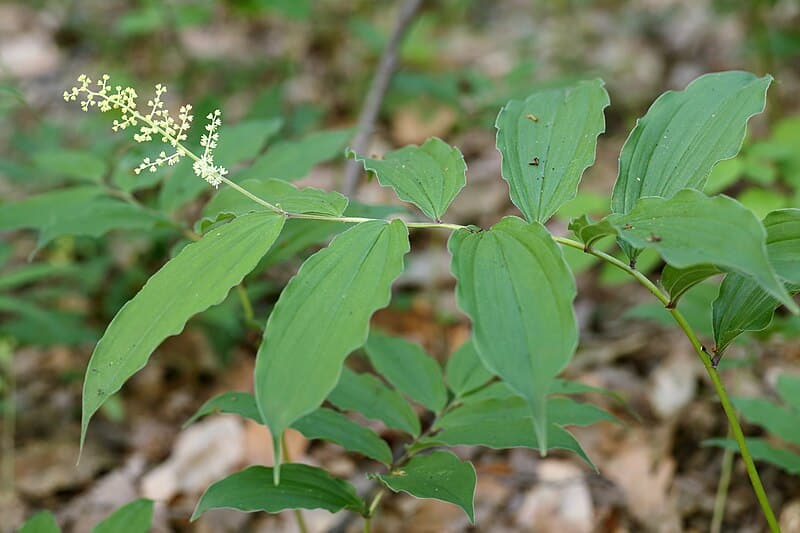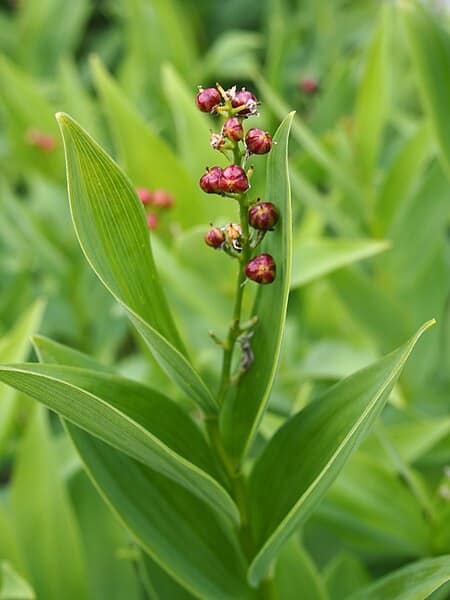False Solomon’s Seal Identification – Maianthemum racemosum
Heads up
You might’ve heard of Solomon’s Seal, a plant often recognized by its unique appearance. However, there’s a lookalike out there named False Solomon’s Seal, or Maianthemum racemosum. Maianthemum is the genus and racemosum refers to its specific type within that genus.
False Solomon’s Seal belongs to the Asparagaceae family. It goes by many names. Some call it Solomon’s Plume or the Feathery False Lily-of-the-Valley.
False Solomon’s Seal: Key Parts in Photos




Where to find it
The False Solomon’s Seal likes to be in the shade, but it doesn’t mind a little sunlight now and then. The woods, especially areas with part shade, are its habitat. If you’re wandering through such areas, particularly during the bloom months of May and June, keep an eye out for it.
How to identify False Solomon’s Seal
The first thing you might notice is the flower cluster. It’s plume-like, somewhat resembling a feather, and measures up to 5 inches in length. Each cluster have up many tiny, star-shaped flowers. Each flower has a fascinating structure. At first glance, it appears to have 6 white petals, but it’s a bit of trickery. Three are actual petals, and three are petal-like sepals (sepals usually protect the flower bud). In the center, you’ll see stamens, the parts that produce pollen, which have cream-colored or pale yellow tips.
The leaves of this plant are about 6 inches long and 3 inches wide, with an oval shape tapering to a pointed tip. Unlike some plants with stalks holding up the leaves, the False Solomon’s Seal’s leaves directly join the stem. The leaves might appear a tad wavy at the edges and will have a series of parallel veins. Flip one over, and you’ll see it’s a bit hairy underneath. Later in the year, the plant’s fruits emerge. They’re waxy berries. When they ripen, they turn a striking bright red.
